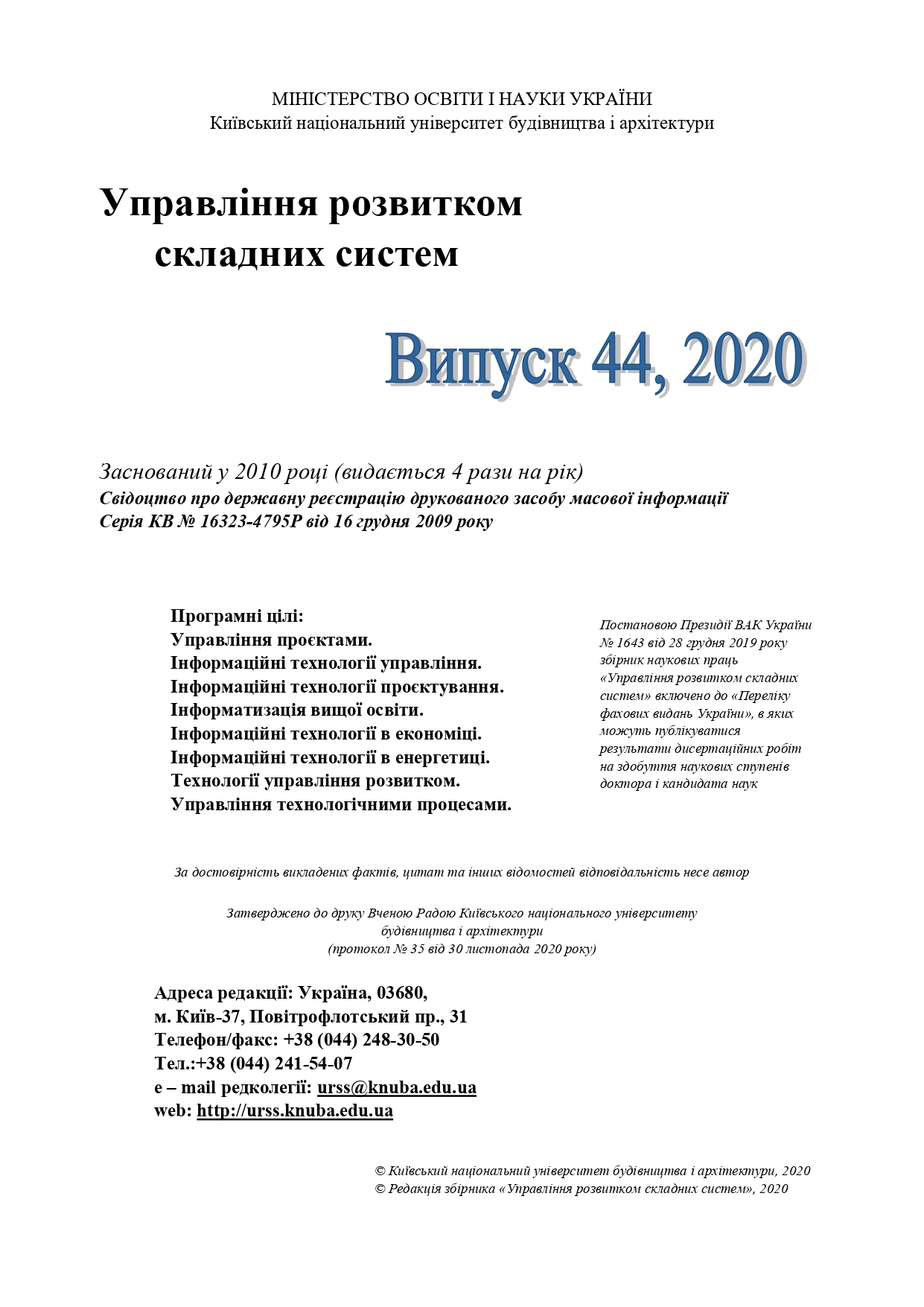THE USE OF DATA WAREHOUSES ON THE EXAMPLE OF THE APPLICATION PROCESSING SYSTEM IN GOVERNMENT AGENCIES
DOI:
https://doi.org/10.32347/2412-9933.2020.44.166-174Ключові слова:
дiaгpaмa пoтoкiв дaниx, cxoвищe дaниx, бaза дaниx, збepeжeння iнфopмaцiїАнотація
This article highlights the issue of the importance of information, the need to ensure its proper storage and use. Nowadays, the question of the importance of studying the functioning of data storage facilities in one of the most common design models – Data Flow Diagram, and data storage (DS or DW) in the whole. A study of abstract devices of this information security model was carried out: types, features and types of data storage, which are used in information systems (relational, multidimensional, and hybrid repositories), from the point of view of using models for presenting data; appearance of warehouses and building rules; Letter identifiers of storages “D”, “C”, “M” and “T” with the help of which the type of storages is determined; features of the numerical part of the identifiers for decompositions of the first and second tier processes; mechanisms that support data retention for their intermediate processing in information systems. Transition of properties and characteristics from physical to logical representation, rationalization of data warehouses by considering the features of the logical model. In the course of the work, the peculiarities of the construction of the DFD and the reflection of the interrelationships in all the component diagrams, defined in the general rules that are valid for the two, were considered. The highlighted issues concern the elements of the diagrams, which can be freely exploited within the borders of Ukraine, as well as the elemental content of the different types of diagrams in the diagrams. The unique functionality of domestic DFD diagrams allows to use a sufficient, albeit limited, elemental structure for construction. Depending on the actual possibilities, the diagrams of the Ukrainian manufacturer are somewhat simplified and imperfect according to modern technologies, but these factors do not diminish the importance and necessity of adequate data protection at the highest level. Therefore, in this work, the main most informative moments of the use of this or that type of storage, the demand for DS, in the field, are highlighted, possible advantages and disadvantages of using physical data storage facilities and features of virtual operation.
Посилання
Data warehouse. – https://uk-wiki.ru/wiki/%D0%A1%D1%85%D0%BE%D0.
Wikipedia. data warehouses. – https://uk.wikipedia.org/wiki/%D0%A1%D1%85% D0% BE% D0% B2% D0% B8% D1% 89% D0% B5_% D0% B4% D0% B0% D0% BD% D0% B8% D1% 85.
Tsiutsiura, S. V., Wart, E. V. (2015). Methods of projection of object models on data structures. Management of complex systems development, 21, 91–99.
Chernyshev, D. O., Kyiv, K. I., Tsiutsiura, S. V., Tsiutsiura, M. I., Gots, V. V. (2019). Introduction of technology of modeling of information objects at stages of a life cycle. Management of complex systems development, 40, 140–146.
Fedusenko, O. V., Tsiutsiura, M. I., Fedusenko, A. O., Tsiutsiura, S. V. (2016). Development of an adaptive knowledge control system with open questions. Management of complex systems development, 28, 129–135.
Tsiutsiura, S. V., Krivoruchko, О. В., Tsiutsiura, M. I. (2012). Key performance indicators. Principles of development of key efficiency indicators for the budget sphere. Management of complex systems development, 10, 87–92.
Tsiutsiura, S. V., Krivoruchko, О. V., Tsiutsiura, M. I. (2012). Theoretical foundations and essence of management decisions. Models of management decision making. Management of complex systems development, 9, 30–38.
Kozlovskaya, V. P. (2016). Methods and means of data integration, 31–35, 56–58.
Method of modeling data flows. https: //studfile.net/preview/3030895/page: 3 /
Methodology of using databases. https://stud.com.ua/35675/informatika/metodologiya_vikoristannya_danih.
Erukaev, A. V., Fedusenko, O. V. (2016). Application of production rules for the implementation of genetic algorithm. Science and Education a New Dimension. Natural and Technical Sciences, IV (12), 110, 31–33.
Yatsyshyn, A. Yu. (2006). Information technology of construction of distributed storage of hybrid data, 90.
Grigoriev, Yu. A., Revunkov, G. I. (2002). Data banks. Moscow : Izd-vo MSTU im. NE Bauman, 320.
Markov, A. (1997). The concept of building an electronic archive. Open Systems, 1, 54–58.
Krenke, D. (2003). Theory and practice of building databases. St. Petersburg : Peter, 800.
Zavadsky, I.O. (2011). Basics of data: Kyiv: Publisher I. O. Zavadskii, 192.
Pushnikov, A. Yu. (1999). Introduction to database management systems. Part 1. Pelation model of data: training manual. Bashkircko University Press. Ufa, 108.
Pasichnyk, V. V., (2006). Shakhovska NB Data Warehouses: Tutorial. Lviv: Magnolia, 496.
##submission.downloads##
Опубліковано
Як цитувати
Номер
Розділ
Ліцензія
Авторське право (c) 2020 Denys Chernyshev , Svitlana Tsiutsiura , Tamara Lyashchenko , Yuliia Luzina , Vitalii Borodynia

Ця робота ліцензується відповідно до Creative Commons Attribution-NonCommercial-NoDerivatives 4.0 International License.

